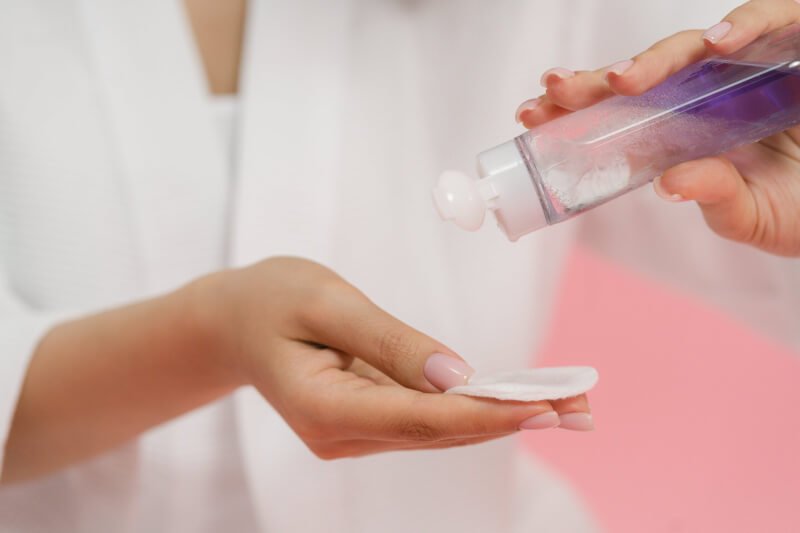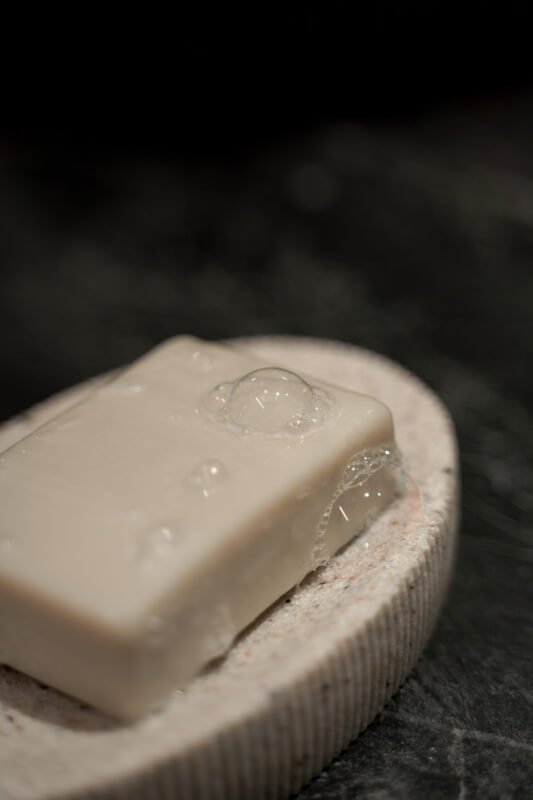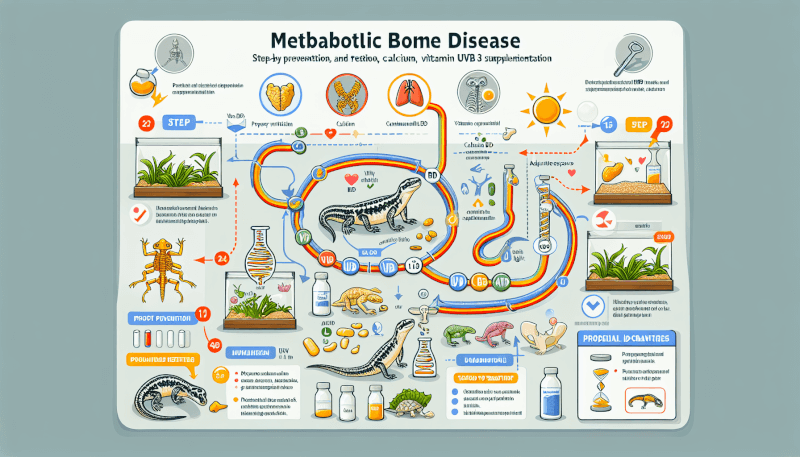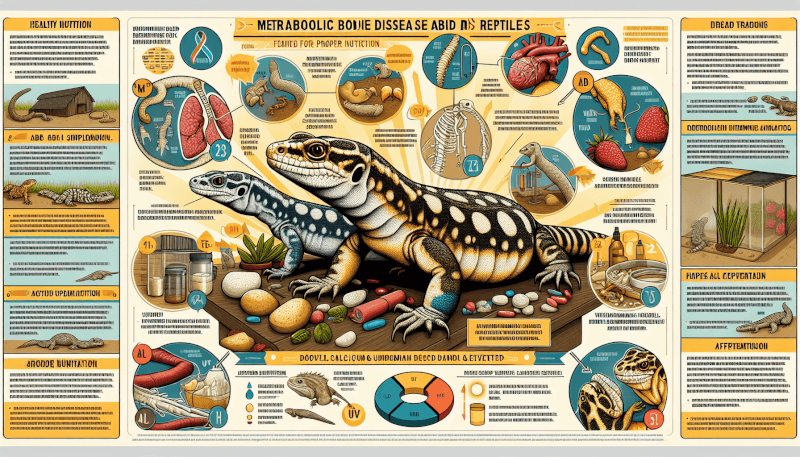In the fascinating world of reptiles, ensuring their health and well-being is paramount. One of the most common conditions that afflicts reptiles is metabolic bone disease, a condition that affects the bones and can lead to severe deformities and even death. Fortunately, there is hope. By providing the right care and nutrition, you can prevent and treat metabolic bone disease in reptiles, ensuring their happy and healthy lives.

Understanding Metabolic Bone Disease
Metabolic Bone Disease (MBD) is a condition commonly seen in reptiles that affects their bone health. It is a result of nutritional imbalances and insufficient exposure to essential nutrients and environmental factors such as UVB light. MBD occurs when there is a disruption in the normal balance between bone formation and resorption, leading to weakened bones and a variety of other symptoms. Understanding this condition is crucial for reptile owners to ensure the well-being of their beloved pets.
What is Metabolic Bone Disease?
Metabolic Bone Disease, also known as Nutritional Secondary Hyperparathyroidism, is a condition that affects the skeletal system of reptiles. It is characterized by a variety of symptoms such as deformities, fractures, softening of bones, muscle weakness, and even organ dysfunction. MBD can be a serious health concern that requires prompt attention and appropriate treatment to prevent further complications.
Causes of Metabolic Bone Disease
The primary cause of Metabolic Bone Disease in reptiles is an inadequate diet, usually lacking in essential nutrients such as calcium, vitamin D3, and phosphorus. Reptiles obtain most of their calcium from their diet, and if their meals lack this vital mineral, their bodies will leach calcium from their bones, leading to bone abnormalities. Another significant factor contributing to MBD is the absence of proper environmental conditions, including insufficient exposure to full-spectrum lighting and inadequate temperature and humidity levels.
Common Symptoms of Metabolic Bone Disease
Recognizing the symptoms of Metabolic Bone Disease is crucial to early detection and treatment. Some common signs of MBD in reptiles include softening or misshapen bones, swollen or bowed limbs, difficulty moving or walking, tremors, lethargy, lack of appetite, and difficulty shedding. If you notice any of these symptoms in your reptile, it is important to seek veterinary care immediately.
Preventing Metabolic Bone Disease
Prevention is always better than treatment when it comes to Metabolic Bone Disease. By providing proper nutrition, balancing calcium and phosphorus levels, utilizing full-spectrum lighting, and maintaining appropriate temperature and humidity, you can significantly reduce the risk of MBD in your reptile companions.
Providing Proper Nutrition
A balanced and varied diet is essential for reptile health. It is crucial to offer a combination of calcium-rich foods, such as dark leafy greens and calcium supplements, along with a variety of insects or prey items to ensure a well-rounded diet. Regularly gut loading insects with calcium-rich foods and using multivitamin and mineral powders can also aid in preventing nutritional deficiencies.
Balancing Calcium and Phosphorus Levels
Maintaining the right balance between calcium and phosphorus is crucial for bone health in reptiles. Calcium is essential for bone formation, while phosphorus is involved in energy metabolism. Ideally, the calcium to phosphorus ratio should be around 2:1 for most reptiles. However, different species may have varying requirements, so consulting with a reptile veterinarian can help determine the ideal ratios for your specific reptile.
Utilizing Full-Spectrum Lighting
Reptiles require adequate exposure to UVB light to properly synthesize vitamin D3, which is essential for calcium absorption. Full-spectrum lighting, such as UVB bulbs, mimics natural sunlight and provides the necessary UVB rays for reptiles. Placing the bulbs in a strategic location inside the enclosure and ensuring the correct duration of lighting is essential for the reptile’s overall health and preventing the occurrence of MBD.
Maintaining Appropriate Temperature and Humidity
Providing the right temperature and humidity levels is vital for reptile health and preventing MBD. Reptiles are ectothermic, meaning they rely on external sources to regulate their body temperature. Creating a thermoregulation gradient within their enclosure, offering basking spots for heat, and ensuring proper humidity levels based on the species’ requirements are crucial factors in preventing MBD and maintaining overall well-being.

Treating Metabolic Bone Disease
If your reptile has been diagnosed with Metabolic Bone Disease, the goal is to correct the underlying nutritional imbalances, provide necessary supplements, and optimize the reptile’s environment to support bone healing and overall recovery. Treatment should always be done under the guidance of a reptile-savvy veterinarian.
Consulting with a Reptile Veterinarian
When dealing with Metabolic Bone Disease, it is essential to consult with a veterinarian who specializes in reptiles. Reptiles have unique physiology and nutritional requirements that may differ from other pets. A reptile-savvy veterinarian will assess the severity of the disease, recommend diagnostic tests, and guide you on the best course of treatment for your reptile companion.
Assessing the Severity of the Disease
To determine the severity of the Metabolic Bone Disease, your veterinarian may perform a physical examination and observe the reptile’s movement, posture, and bone structure. Radiographic evaluation, blood tests, and bone density scans might also be conducted to assess the extent of bone abnormalities and determine the overall health status of the reptile.
Correcting Nutritional Imbalances
Once the severity of the disease has been established, correcting nutritional imbalances becomes a crucial step in the treatment process. Your reptile veterinarian will guide you on adjusting the reptile’s diet, incorporating calcium and vitamin D3 supplements to restore appropriate levels in the body and support proper bone formation. Determining the optimal supplementation schedule is vital, as excess supplementation can also lead to health issues.
Administering Calcium and Vitamin D Supplements
In cases of Metabolic Bone Disease, administering calcium and vitamin D3 supplements plays a vital role in improving bone health. Your veterinarian will recommend appropriate supplementation methods, such as oral supplementation or injections, based on the reptile’s needs and the severity of the disease. Consistency in supplementation and proper dosing are essential for effective treatment.
Ensuring Sufficient Exposure to UVB Light
In addition to nutritional adjustments and supplementation, ensuring adequate exposure to UVB light is crucial for reptile recovery. Your veterinarian will guide you on the optimal placement and duration of the UVB bulbs within the enclosure, taking into consideration the reptile’s specific needs and behaviors. Regularly replacing UVB bulbs is also important, as they lose their effectiveness over time.
Monitoring and Adjusting Environmental Factors
Monitoring and adjusting environmental factors, such as temperature and humidity, are necessary throughout the treatment process. Regularly assessing temperature gradients, providing appropriate basking spots and hiding areas, and maintaining optimal humidity levels are vital for promoting bone healing and overall well-being. Making necessary changes to the enclosure, such as adding additional heat sources or misting systems, may be required to ensure a suitable environment for your reptile.
Dietary Considerations for Reptiles
Proper nutrition is the foundation of reptile health and plays a pivotal role in preventing Metabolic Bone Disease. Understanding dietary considerations, including feeding a balanced and varied diet, choosing calcium-rich foods, avoiding phosphorus-rich foods, supplementing with multivitamin and mineral powders, and optimizing gut loading for insects, is essential in maintaining the well-being of your reptile companion.
Feeding a Balanced and Varied Diet
Reptiles require a balanced and varied diet that includes a combination of appropriate feeder insects, vegetables, greens, and fruits. The diet should reflect the natural prey items of the reptile species and offer a variety of nutrients necessary for overall health. Consulting with a reptile veterinarian or conducting research on the specific dietary requirements of your reptile species will help you provide a well-rounded diet.
Choosing Calcium-Rich Foods
Calcium is a vital nutrient for reptiles, especially for their bone health. Offer calcium-rich foods, such as dark leafy greens, bok choy, kale, and other calcium-dense vegetables. These foods should be part of the reptile’s regular diet to ensure they obtain sufficient calcium for proper bone formation.
Avoiding Phosphorus-Rich Foods
While phosphorus is an essential mineral, an excess amount of it can negatively impact calcium absorption and lead to nutritional imbalances. Avoid feeding reptiles foods high in phosphorus, such as insects with high exoskeleton content, seeds, and legumes, in excessive amounts. Striking the right balance between calcium and phosphorus is crucial for preventing the onset of Metabolic Bone Disease.
Supplementing with Multivitamin and Mineral Powders
Multivitamin and mineral powders specifically formulated for reptiles can be added to their diet to ensure they receive a broad range of essential nutrients. These supplements help bridge any potential gaps in the reptile’s regular diet and provide additional support for their overall health. It is important to follow the recommended dosage guidelines and consult with a reptile veterinarian if unsure about the appropriate supplementation for your reptile.
Optimizing Gut Loading for Insects
Feeder insects, such as crickets, dubia roaches, or mealworms, can be an excellent source of nutrition for reptiles. However, their nutritional value greatly depends on what they are fed. The process of gut loading involves feeding the insects with nutritious foods before being offered to the reptile. Feeder insects that have been properly gut loaded with calcium-rich foods can enhance the reptile’s dietary calcium intake and help prevent nutritional deficiencies that can lead to Metabolic Bone Disease.

Importance of Calcium and Phosphorus Balance
The balance between calcium and phosphorus is crucial for proper bone formation and overall health in reptiles. Understanding the role of calcium and phosphorus, as well as maintaining an ideal calcium to phosphorus ratio, is vital for preventing the onset of Metabolic Bone Disease.
Understanding Calcium
Calcium is an essential mineral that plays a vital role in reptile health. It is responsible for maintaining bone density, proper nerve function, muscle contraction, and blood clotting. Reptiles rely on dietary sources to fulfill their calcium requirements. Insufficient calcium intake can lead to weakened bones and inadequate bone growth, increasing the risk of bone deformities and fractures.
The Role of Phosphorus
Phosphorus is another essential mineral that works in conjunction with calcium. It contributes to energy metabolism, DNA synthesis, and proper cell function. However, an excessive amount of phosphorus compared to calcium can hinder calcium absorption and negatively affect bone health. Maintaining the right balance between calcium and phosphorus is essential for optimal bone health in reptiles.
Ideal Calcium to Phosphorus Ratio
The ideal calcium to phosphorus ratio for most reptiles is around 2:1. However, it is important to note that different reptile species have varying requirements. Some reptiles, such as herbivores, may require a slightly higher ratio, while others, such as carnivores, may require a slightly lower ratio. Consulting with a reptile veterinarian or conducting research on your specific reptile species’ dietary needs is crucial in maintaining the correct calcium to phosphorus balance and preventing the development of Metabolic Bone Disease.
The Role of Full-Spectrum Lighting
Full-spectrum lighting, specifically UVB light, plays a vital role in reptile health, particularly in the prevention of Metabolic Bone Disease. Understanding the benefits of UVB light for reptiles, choosing the right UVB bulbs, ensuring proper placement and duration of lighting, and regularly replacing UVB bulbs are important considerations for reptile owners.
Benefits of UVB Light for Reptiles
UVB light is necessary for reptiles to properly synthesize vitamin D3 in their skin. Vitamin D3, in turn, allows reptiles to absorb and utilize calcium from their diet effectively. Without adequate exposure to UVB light, reptiles can develop severe deficiencies in vitamin D3, leading to poor calcium absorption and the onset of Metabolic Bone Disease. Providing UVB light replicates their natural sunlight exposure and helps maintain proper calcium homeostasis.
Choosing the Right UVB Bulbs
Not all UVB bulbs are created equal, so it is important to choose the right ones for your reptile’s enclosure. Reptile-specific UVB bulbs, such as fluorescent tubes or compact bulbs, are designed to emit the appropriate UVB wavelengths necessary for reptile health. Consult with a reptile veterinarian or do thorough research to select the appropriate UVB bulb based on your reptile’s species, enclosure size, and needs.
Proper Placement and Duration of Lighting
Proper placement and duration of UVB lighting are key factors in ensuring optimal reptile health. UVB bulbs should be positioned within the enclosure at a height and angle that allows for sufficient exposure to the reptile, while still providing areas to escape the UVB rays. The duration of lighting should correspond to the reptile’s natural sunlight cycle, replicating day and night cycles. Consult with a reptile veterinarian or refer to specific guidelines for your reptile species to determine the best placement and duration of UVB lighting.
Replacing UVB Bulbs Regularly
UVB bulbs lose their effectiveness over time, with the UVB output declining significantly even before the bulb burns out. Replacing UVB bulbs regularly, usually every 6 to 12 months, is essential to ensure your reptile receives the necessary UVB exposure. Keeping track of bulb replacement dates or utilizing bulb timers can help maintain proper UVB levels and prevent the onset of Metabolic Bone Disease.

Maintaining Proper Temperature and Humidity
Creating and maintaining the proper temperature and humidity levels in your reptile’s enclosure is crucial for their overall health and preventing the development of Metabolic Bone Disease. Understanding the importance of creating a thermoregulation gradient, providing basking spots, meeting humidity requirements, using hygrometers and thermometers, and humidifying enclosures properly are vital aspects of reptile care.
Creating a Thermoregulation Gradient
Reptiles require a thermoregulation gradient in their enclosure, offering a range of temperatures to allow them to regulate their body temperature according to their needs. This gradient is typically created by placing heat sources, such as heat lamps or under-tank heat mats, at one end of the enclosure, while the other end remains cooler. This temperature variation allows reptiles to move between different temperature zones, ensuring they can thermoregulate properly.
Providing Basking Spots
Basking spots are essential for reptiles to regulate their body temperature effectively. By providing a specific area within the enclosure with a higher temperature, usually achieved with a basking heat lamp, reptiles can raise their body temperature when needed. Basking spots also encourage natural behaviors, such as sunning and digestion, and support overall well-being.
Humidity Requirements for Different Reptiles
Reptiles have varying humidity requirements based on their species and natural habitat. Some reptiles, like tropical species, require higher humidity levels, while others, like desert-dwelling species, thrive in lower humidity environments. It is crucial to research and understand your specific reptile species’ humidity requirements to provide an appropriate environment that helps prevent the onset of Metabolic Bone Disease.
Using Hygrometers and Thermometers
Monitoring temperature and humidity levels within the reptile’s enclosure is important to ensure optimal conditions. Hygrometers and thermometers are useful tools that allow you to measure and track these factors accurately. Regularly checking temperature and humidity levels and making necessary adjustments help maintain a healthy environment for your reptile.
Humidifying Enclosures
To meet specific humidity requirements, reptile owners may need to actively humidify their reptile’s enclosure. Depending on the species’ needs, this can be achieved using misting systems, water bowls, or substrate choices that retain moisture. Maintaining the appropriate humidity level helps prevent the development of dehydration-related issues and supports proper shedding and overall reptile health.
Seeking Professional Veterinary Care
When it comes to Metabolic Bone Disease or any reptile health concerns, seeking professional veterinary care is crucial for proper diagnosis, treatment, and long-term management. Finding a reptile-savvy veterinarian, understanding the diagnostic tests for MBD, determining the best treatment approach, and following up with long-term care are essential steps in ensuring your reptile’s health.
Finding a Reptile-Savvy Veterinarian
Not all veterinarians have experience and specialized knowledge in reptile health. Finding a reptile-savvy veterinarian, who understands the unique needs and physiology of reptiles, is vital for the proper diagnosis and treatment of Metabolic Bone Disease. Reptile-specific veterinarians can provide expert guidance, advise on appropriate treatment plans, and offer valuable long-term care for your reptile companion.
Diagnostic Tests for Metabolic Bone Disease
To accurately diagnose Metabolic Bone Disease, reptile veterinarians may utilize a range of diagnostic tests. These tests can include physical examinations and observations, radiographic evaluations to assess bone structure and integrity, blood tests to assess calcium and phosphorus levels, and bone density scans to evaluate bone health. Diagnostic tests help determine the severity of the disease and guide treatment decisions.
Determining the Best Treatment Approach
The best treatment approach for Metabolic Bone Disease may vary depending on the severity of the condition and the specific needs of the reptile. Reptile veterinarians will assess these factors and determine the most suitable treatment options, which could include nutritional adjustments, calcium and vitamin D3 supplementation, environmental modifications, and supportive care. Following the veterinarian’s guidance is crucial for effective treatment and the reptile’s recovery.
Long-Term Management and Follow-up
Metabolic Bone Disease may require long-term management to ensure the reptile’s continued well-being. Regular follow-up appointments with a reptile-savvy veterinarian, monitoring of the reptile’s progress, and reassessment of nutritional and environmental factors are essential for maintaining optimal bone health and preventing disease recurrence. Open communication with the veterinarian and awareness of the reptile’s overall health are key to long-term management and a happy, healthy reptile.

Assessing Disease Severity
Assessing the severity of Metabolic Bone Disease is crucial for determining appropriate treatment plans and recognizing the impact of the disease on your reptile’s overall health. Physical examination and observation, radiographic evaluation, blood tests, and bone density scans are common methods used by reptile veterinarians to evaluate disease severity.
Physical Examination and Observation
During a physical examination, reptile veterinarians examine the reptile for visible signs of Metabolic Bone Disease. They assess the reptile’s movement, posture, bone structure, and muscle health. Additionally, observing the reptile’s behavior, appetite, and overall energy levels provides valuable information about the severity of the disease and any potential complications.
Radiographic Evaluation
Radiographs, also known as X-rays, are powerful diagnostic tools used to assess bone structure and integrity. Reptile veterinarians may take radiographs of affected limbs or the entire body to visualize bone abnormalities, fractures, or signs of demineralization. These images help determine the extent of bone damage and guide treatment decisions.
Blood Tests and Bone Density Scans
Blood tests are commonly used to assess calcium and phosphorus levels in the reptile’s body. Reptile veterinarians analyze these results to determine the presence of any imbalances that could contribute to Metabolic Bone Disease. In some cases, bone density scans, such as dual-energy X-ray absorptiometry (DEXA), may be used to evaluate bone health more accurately and assess the severity of the disease.
Monitoring and Adjusting Environmental Factors
Monitoring and adjusting environmental factors are crucial components of reptile care, especially in the context of Metabolic Bone Disease. Regular assessment of temperature and humidity levels, adjusting lighting based on reptile needs, ensuring proper nutritional supplements, and making necessary changes to the enclosure are important aspects of maintaining a healthy environment for your reptile.
Regularly Assessing Temperature and Humidity Levels
Reptiles are highly sensitive to their environment, particularly regarding temperature and humidity. Regularly monitoring temperature gradients and humidity levels within the enclosure is crucial for maintaining optimal conditions. Inaccurate temperature or humidity levels can negatively impact reptile health and increase the risk of Metabolic Bone Disease. Make adjustments as needed to ensure the reptile’s environment remains within the appropriate range.
Adjusting Lighting Based on Reptile’s Needs
Reptiles have specific lighting requirements, including exposure to UVB light. Understanding the needs of your reptile species and adjusting lighting based on those needs is crucial for preventing and treating Metabolic Bone Disease. Consult with a reptile veterinarian or refer to reliable resources to determine appropriate placement, duration, and intensity of lighting within the enclosure.
Ensuring Proper Nutritional Supplements
Proper nutrition is essential for reptile health and plays a significant role in preventing Metabolic Bone Disease. Alongside a balanced and varied diet, reptiles may require nutritional supplements, including calcium and vitamin D3, to meet their specific needs. Ensuring the reptile receives appropriate supplementation and maintaining a consistent schedule is important for maintaining optimal bone health.
Making Necessary Changes to the Enclosure
Reptiles’ needs may change over time, requiring adjustments to their enclosure. As reptiles grow or age, their housing requirements may evolve, necessitating modifications to temperature gradients, basking spots, humidity levels, or hiding places. Regularly assess the reptile’s enclosure and make necessary changes to ensure it continues to provide a suitable and supportive environment for their bone health and overall well-being.
In summary, understanding Metabolic Bone Disease is crucial for reptile owners to provide proper care and prevent the development of this debilitating condition. By ensuring proper nutrition, balancing calcium and phosphorus levels, utilizing full-spectrum lighting, and maintaining optimal temperature and humidity, owners can greatly reduce the risk of their reptiles developing Metabolic Bone Disease. In the event that MBD does occur, seeking professional veterinary care, making necessary adjustments to the reptile’s diet and environment, and consistently monitoring and assessing their overall health is essential for successful treatment and long-term management. With the right knowledge and proactive approach, reptile owners can help their beloved companions live healthy lives, free from the effects of Metabolic Bone Disease.

